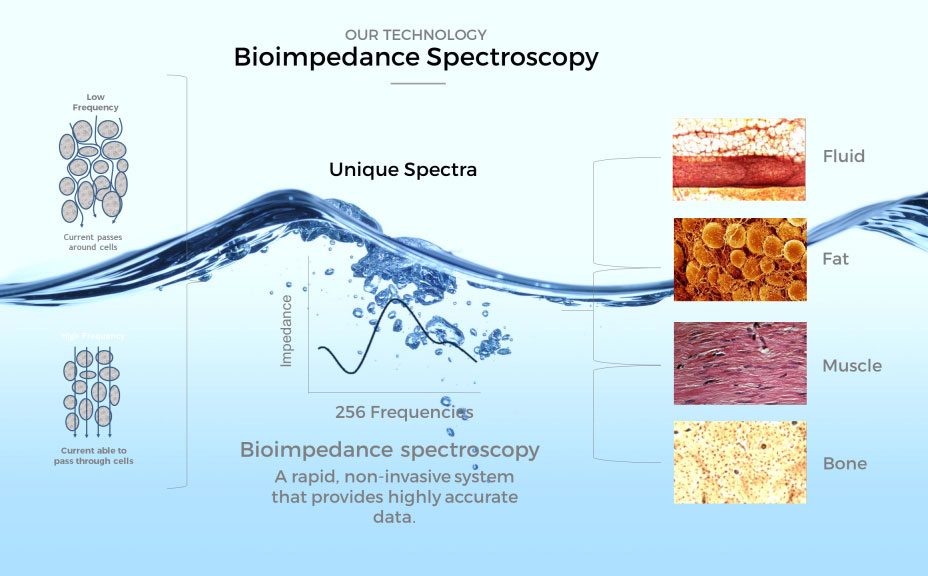BIS detects medically meaningful fluid shifts as low as 36 ml in a limb.1
What is BIS?
Bioimpedance spectroscopy (BIS) is the only noninvasive, low-cost technology that can accurately measure a patient’s total body water, extracellular and intracellular fluid volumes in a clinical setting. This detailed data can help healthcare professionals with early detection, assessment and interventions for chronic conditions.
Final 3-Year Primary Endpoint Results Published
Clinically proven
ImpediMed and our subsidiaries pioneered the use of BIS technology, producing the first commercially available BIS devices in 1990. Our patented, clinically proven BIS technology measures impedance at 256 different frequencies, from 3 kHz to 1000 kHz, and uses validated mathematical models to determine three pure resistance values in the body:
- Resistance at zero frequency, which translates to the free fluid outside of the body’s cells
- Intracellular resistance, which translates to the intracellular fluid inside the body’s cells
- Resistance at infinite frequency, which translates to the total body water including fluid inside of the body’s cells
These values form the foundation of all of the tissue and fluid output measures produced by ImpediMed’s BIS products.
Limitations of other systems
In contrast, other bioimpedance systems use multi-frequency bioimpedance analysis (MF-BIA). Unlike BIS, MF-BIA devices typically measure impedance at 2-6 different frequencies and are unable to determine the pure resistance values at zero and infinite frequencies. MF-BIA relies instead on equations applied to single-frequency impedances to create readings of the patient’s fluid levels. None of these provides a pure quantification of the different fluid compartments in the body.

Extensively researched
ImpediMed’s BIS technology has been studied in more than 500 peer-reviewed, published articles and over 40 different disease states or medical conditions. These studies have demonstrated the utility of BIS in monitoring fluid status and tissue composition for multiple purposes including the management of chronic diseases.
You can take control of your survivorship with simple, early lymphedema detection – before it becomes chronic.
References
- Ward L. Is BIS ready for prime time as the gold standard measure? Journal of Lymphoedema, 2009. 4(2): p. 52-56.
- Ridner SH, et al. A Comparison of Bioimpedance Spectroscopy or Tape Measure Triggered Compression Intervention in Chronic Breast Cancer Lymphedema Prevention. Lymphatic Research and Biology 2022.
- Weyer S, et al. Bioelectrical impedance spectroscopy as a fluid management system in heart failure. Physiol Meas, 2014. 35(6): p. 917-30.